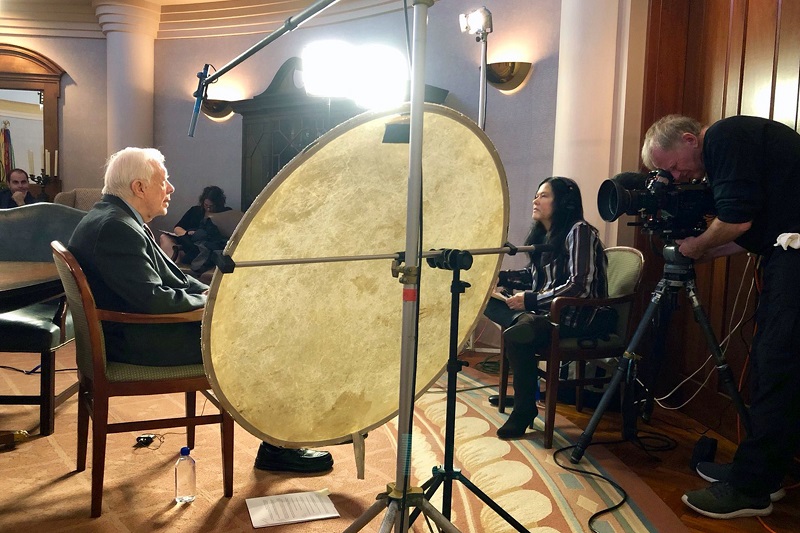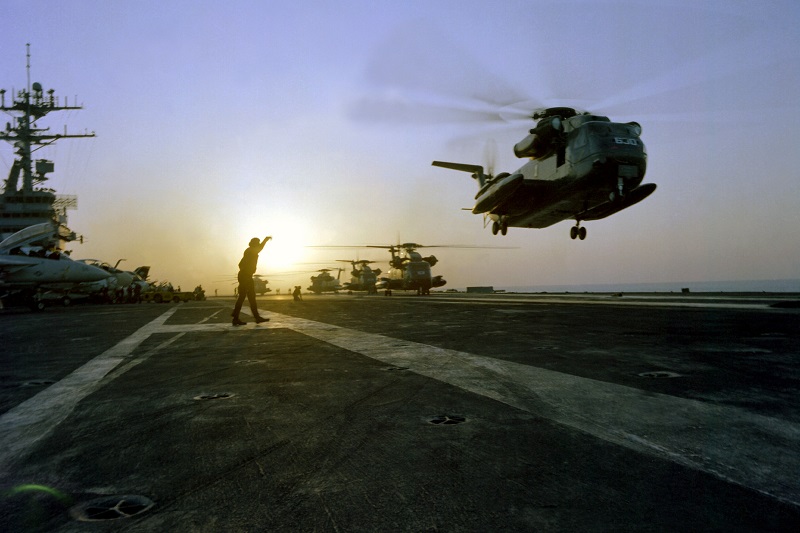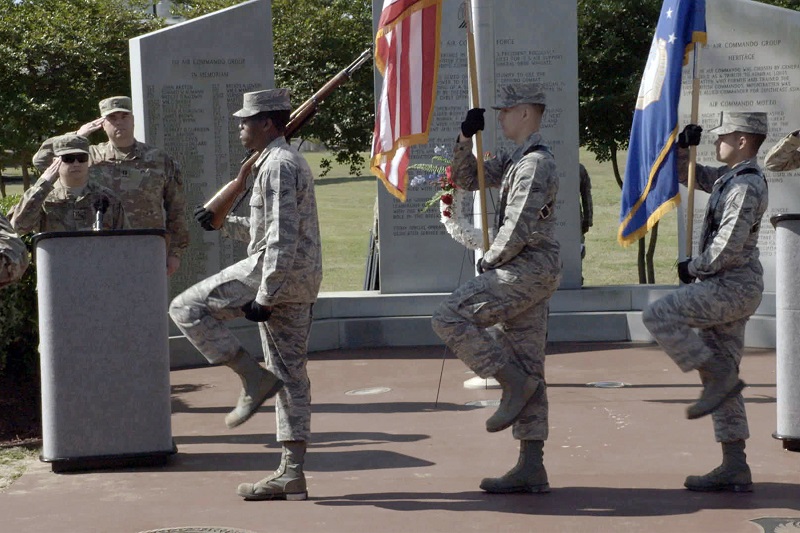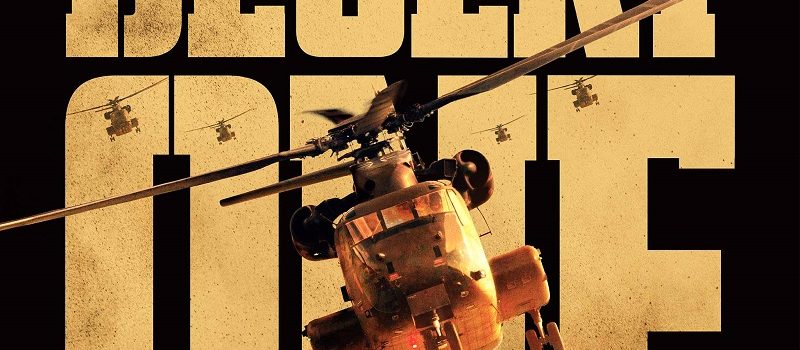What is well known in American history is that our 52 of our citizens were held in Iran for 444 days before they achieved freedom. What is not as well known is that there was a rescue mission led by American Special Ops that was noble in effort, yet tragic in its end results. Chronicling that incredibly brave endeavor is Desert One, a new documentary from two-time Oscar winner Barbara Kopple, that will leave you with a myriad of feelings.

After experiencing Desert One, viewers will be overcome with sadness for the eight souls that perished in the failed mission, a newfound respect for President Jimmy Carter for not only green-lighting the rescue effort but almost more so for owning its failure on national television in the months prior to the nation heading to the polls for a presidential election. Not only does Kopple secure footage that frames her narrative brilliantly and a bevy of brilliant folks whose priceless insight comes from all corners of this story, but her extensive interviews with President Carter, Vice President Walter Mondale, ABC Nightline Journalist Ted Koppel—whose nightly broadcasts focused solely on those captive Americans, hostage-takers, former hostages, members of the military rescue team, and even the former head of the CIA Robert Gates (who briefed Carter continually on the situation).
She makes a bold narrative choice in utilizing stunning animation to give audiences a stark vision of situations where no video exists (such as inside the American Embassy compound during and after the takeover, certain aspects of the military exercise that literally blew up in our faces in the Iranian desert). Sometimes documentary filmmakers use animation for the same reasons mentioned before, but it comes off as voyeuristic and worse, does little to add to the informative nature of the film milieu. For Kopple, it was imperative to effectively and efficiently capture moments that would have otherwise been defined by the audiences’ collective imagination. Sometimes that’s OK. But when seeking to honor the memories of eight soldiers who perished, literally, in the name of freedom, it works painting the picture for the viewer and as such, its toll is quantifiable.
Another element that sets Desert One apart is how getting the Iranian perspective was seen as integral to the wholeness of the story. After experiencing the entire film, it was and is part of what lingers with me long after the film concluded. For example, they tracked down an Iranian man who was 11-years-old at the time of the rescue mission. He was on a bus of Iranians who had the misfortune of being on the desolate road that the American military brass had determined was the best spot to anchor the shuttling of helicopters, aka Desert One, to and from Tehran and the USS Nimitz that sat anchored in the Gulf.
The title of the film referenced the geographical point inside Iran where now sits the remains of several U.S. military planes and helicopters. That Middle Eastern country celebrates that day of the “failed attack” on Iran each year and Iranians make pilgrimages to Desert One to honor the spot where their country sent a world power running home with its tail between its legs. With the release of this documentary, it could be argued that filmmakers have taken back the moniker and now keenly honors those who lost their lives in a fireball triggered by a sandstorm that sent one helicopter crashing into a C130 transport aircraft. In the film, we hear the taped conversations of POTUS and the General leading the mission as the information from the crash slowly makes its way back to those in charge of the mission. It would ultimately be the reason why President Carter called off the mission altogether.
That aspect of the film is sadly refreshing. As we currently have a resident in the White House who has never once taken responsibility for his handling of anything, it may come off as political suicide witnessing the former peanut farmer that is Carter making it clear on numerous fronts that the failure of his mission, the loss of life that resulted in this aborted rescue attempt, it all lies on him. In fact, it was political suicide. History has shown that Ronald Reagan won in an electoral and popular vote landslide. In the final blow to Carter, the leaders in Iran made sure that the edict to free the hostages came not on his watch, but literally minutes into Reagan’s. Even though Desert One clearly shows it was Carter who was working the phones in the morning of Reagan’s inauguration to secure our hostages’ release.

Having Carter and Mondale interviewed for the film is a huge coup for Kopple. It was incredibly moving on several occasions to hear the former president in his own words (and emotively through inflection) talking about the entire affair. Time is the great equalizer, but the loss of those eight soldiers and the 444 days our hostages will never get back weighs heavily on the former president. In that realm, hearing from former hostages and their keepers is a fascinating study as well in how time has mentally influenced all involved. As the Iranians are still very much an Islamic state, as they were in 1980, the subject of America still comes with a colored view of our two countries’ relations. The Americans who were held in Iran, on the other hand, still possess an enamored opinion of the Iranian people… one that brought them to the country in the first place. It’s a fascinating dichotomy.
There have been numerous documentaries that have shined a spotlight on the taking of 52 American citizens at gunpoint, where they would be held for 444 days. Desert One sets its mission statement around the military angle to this history lesson. It is a political story. It is a history lesson in international relations under the guise of American kingmakers. By the close of Kopple’s stunning film, it is impossible to not see the roots of this crisis firmly being established by the placing of the Shah in power in Iran. Even though Carter sought a peaceful or diplomatic response to the hostage crisis, his allowing of the Shah to not only come to America but to receive treatment for his cancer, was seen as a middle finger to the people of Iran who he had treated as only a vicious dictator does. That is brilliantly covered in Desert One, which informs why Carter approached the crisis in the manner he did. He got hammered by Reagan for not having more of a military response sooner, but given what we glean from this film, the president weighed all options before finally feeling he had no choice but to approve a rescue mission, executed by some of our finest special-ops soldiers.

President Carter has been largely viewed as having executed a failed presidency—economically, politically, and militarily. As illustrated in Desert One, all the planning in the world would not have helped what occurred on that sandy stretch of isolated road in southern Iran for our troops readying to take off for that country’s capital with the noblest of missions—freeing hostages. A sandstorm blinded pilots and even gave one vertigo that would have him believing he was flying away from the other aircrafts and instead, had him flying right into them. For the former president, it is yet another spoke in Carter’s wheel, one that is defined as disastrous. Hopefully, this film not only rightfully salutes the brave souls who gave their most precious gift trying to save American captives but will also shine a light on a presidency that was one governed by heart, hope, and an innate belief in the goodness of others.
There is a fantastic moment in the film that encapsulates the entire cinematic endeavor that is Kopple’s film. A group of British soldiers sent over a case of beer to the troops returning from the failed rescue mission. The note attached said it all. “To you all from us all for having the guts to try.”
Grade: A

